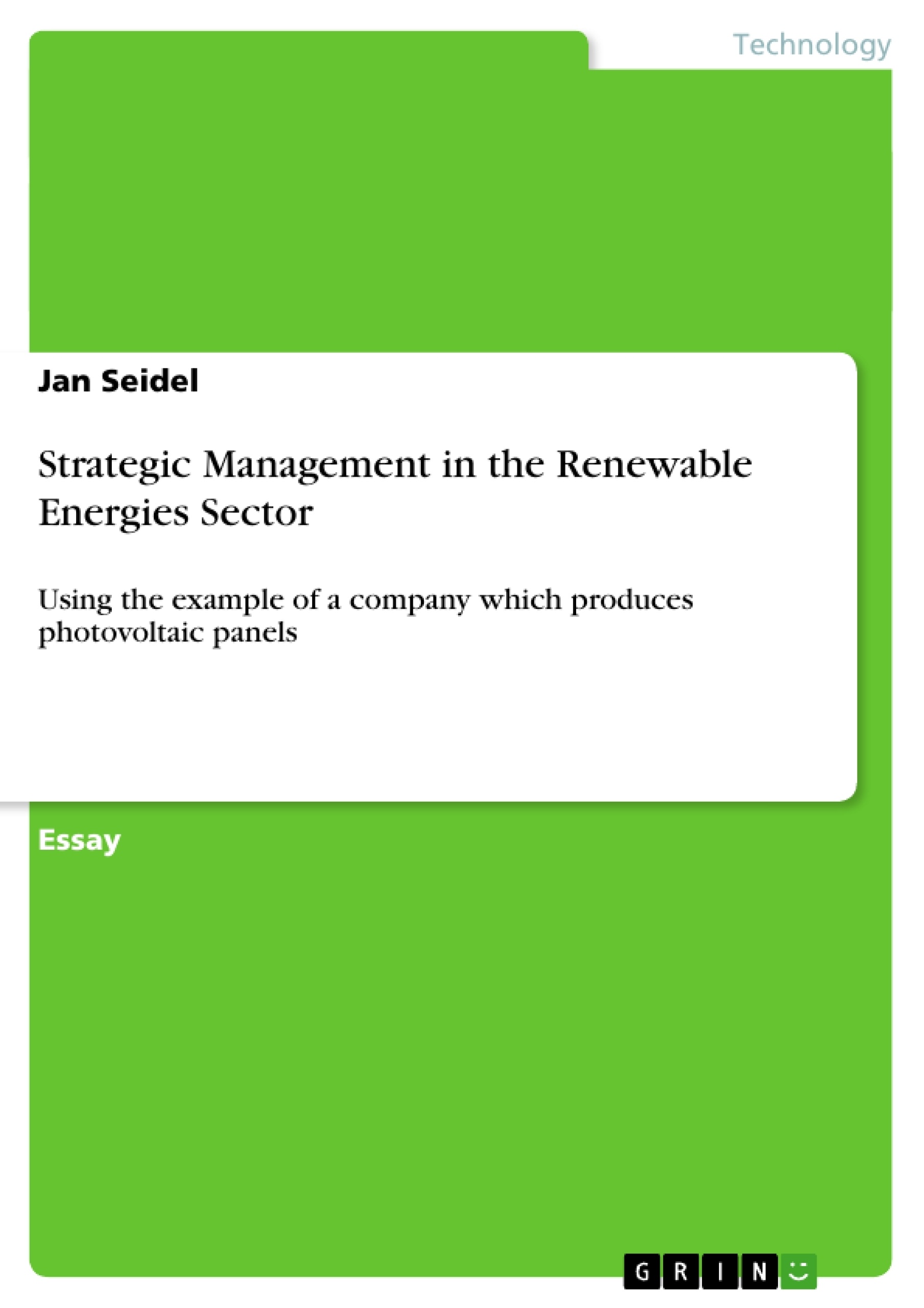There are various definition of strategic management in the literature because of the complexity and different approaches to deal with strategies. To give a brief idea what strategic management is all about the following definition is given. “Strategic management is a process, directed by top management, to determine the fundamental aims or goals of the organisation, and ensure a range of decisions which will allow for the achievement of those aims or goals in the long-term, whilst providing for adaptive responses in the short-term”. (Cole, 1997) Companies in the photovoltaic (PV) sector need to pass through the process of strategic management as well as their competitors. They will reach their aims and forecast or react on changes in the market to ensure the survival or development of the firm. This process will be presented in this work.
Inhaltsverzeichnis (Table of Contents)
- Introduction
- Strategic Management
- Photovoltaic and the Renewable Energies Sector
- The Process of Strategic Management
- Purpose, Goals and Objectives
- Analysing the External and Internal Environment
- Schools of Thoughts
- Strategic Analysis
- Competitive Strategies
- Forecasting the Future
- Formulating the Strategies
- Implementing the Strategies
- Conclusion
Zielsetzung und Themenschwerpunkte (Objectives and Key Themes)
This essay explores the strategic management process within the renewable energies sector, specifically using the example of a company that produces photovoltaic (PV) panels. It aims to provide a comprehensive understanding of how strategic management principles can be applied in this context, examining key aspects such as purpose, goals, external analysis, internal analysis, competitive strategies, and forecasting.
- Strategic Management in the Renewable Energies Sector
- The Importance of Photovoltaic Technology
- Analysis of the External and Internal Environments
- Formulating and Implementing Effective Strategies
- Challenges and Opportunities in the PV Sector
Zusammenfassung der Kapitel (Chapter Summaries)
- Introduction: This chapter introduces the concept of strategic management and its relevance to companies in the photovoltaic sector. It highlights the importance of the renewable energies sector in achieving environmental sustainability goals.
- The Process of Strategic Management: This chapter delves into the key elements of strategic management. It explores the setting of purpose, goals, and objectives within the company, emphasizing the need for alignment with long-term environmental considerations. Additionally, it discusses the importance of analyzing the external and internal environment to identify opportunities and threats.
Schlüsselwörter (Keywords)
The key terms and concepts discussed in this essay include: strategic management, renewable energies, photovoltaic (PV) technology, external analysis, internal analysis, competitive strategies, forecasting, environmental sustainability, and goal-setting.
- Quote paper
- Dipl.-Ing. (FH) Jan Seidel (Author), 2007, Strategic Management in the Renewable Energies Sector, Munich, GRIN Verlag, https://www.grin.com/document/77057



